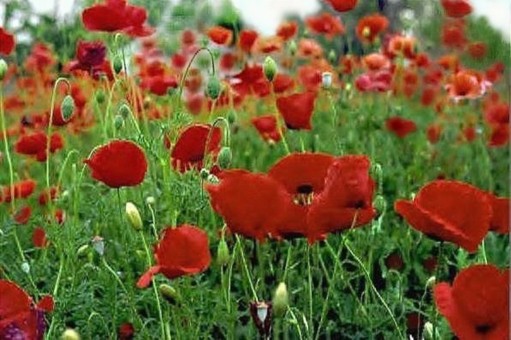I have little recollection of my time at primary school, whether in the infants or juniors, which feels like a century ago, but I do remember a fair amount of my years at secondary school (which nevertheless also feels like a century ago).
One of the features that really stands out about my secondary school was the five 'houses' of allegiance into which the pupils were divided. Each of these houses was headed by its own Master who usually presided over the morning house assemblies (always religious) that took place there 3 to 4 times a week, when there was no general assembly in the main hall taken by the Headmaster or Deputy Head Master (these titles had not yet been changed to the new genderless title of 'head teacher' for political correctness).
The names and associated colours of the various houses were as follows:-
 Brunel (blue): Named after Isambard Kingdom Brunel (9 April 1806 – 15 September 1859), the English mechanical and civil engineer who built bridges and dockyards, the Great Western Railway, a series of steamships including the first propeller-driven transatlantic steamship and numerous important bridges and tunnels. His designs revolutionised public transport and modern engineering.
Brunel (blue): Named after Isambard Kingdom Brunel (9 April 1806 – 15 September 1859), the English mechanical and civil engineer who built bridges and dockyards, the Great Western Railway, a series of steamships including the first propeller-driven transatlantic steamship and numerous important bridges and tunnels. His designs revolutionised public transport and modern engineering.
 Fleming (green): Named after Sir Alexander Fleming (6 August 1881 – 11 March 1955) a Scottish biologist, pharmacologist and botanist. His best-known discoveries are the enzyme lysozyme in 1923 and the antibiotic substance penicillin in 1928, for which he shared the Nobel Prize in Physiology or Medicine in 1945 with Howard Florey and Ernst Boris Chain. He also wrote many penetrating articles on bacteriology, immunology, and chemotherapy.
Fleming (green): Named after Sir Alexander Fleming (6 August 1881 – 11 March 1955) a Scottish biologist, pharmacologist and botanist. His best-known discoveries are the enzyme lysozyme in 1923 and the antibiotic substance penicillin in 1928, for which he shared the Nobel Prize in Physiology or Medicine in 1945 with Howard Florey and Ernst Boris Chain. He also wrote many penetrating articles on bacteriology, immunology, and chemotherapy.
 Rutherford (red): Named after Ernest Rutherford, 1st Baron Rutherford of Nelson (30 August 1871 – 19 October 1937), a New Zealand-born British chemist and physicist who became known as the father of nuclear physics. He is considered the greatest experimentalist since Michael Faraday (1791–1867). He did a lot more besides and his accomplishments and accolades were considerable, but what's more to the point here is that this was the House I was allocated to when I was admitted to the school and I stayed there right to the end. And after all these years I still recall the name of my House Master, one Wynn Owen, a true-blue Welshman of impeccable morals (though this did not stop him from using corporal punishment on his young charges, a common practice in those days).
Rutherford (red): Named after Ernest Rutherford, 1st Baron Rutherford of Nelson (30 August 1871 – 19 October 1937), a New Zealand-born British chemist and physicist who became known as the father of nuclear physics. He is considered the greatest experimentalist since Michael Faraday (1791–1867). He did a lot more besides and his accomplishments and accolades were considerable, but what's more to the point here is that this was the House I was allocated to when I was admitted to the school and I stayed there right to the end. And after all these years I still recall the name of my House Master, one Wynn Owen, a true-blue Welshman of impeccable morals (though this did not stop him from using corporal punishment on his young charges, a common practice in those days).
 Stephenson (yellow): Named after George Stephenson (9 June 1781 – 12 August 1848), an English civil engineer and mechanical engineer who built the first public railway line in the world to use steam locomotives. Renowned as being the "Father of Railways", the Victorians considered him a great example of diligent application and thirst for improvement. His rail gauge of 4 feet 81⁄2 inches (1,435 mm), sometimes called "Stephenson gauge", is the world's standard gauge.
Stephenson (yellow): Named after George Stephenson (9 June 1781 – 12 August 1848), an English civil engineer and mechanical engineer who built the first public railway line in the world to use steam locomotives. Renowned as being the "Father of Railways", the Victorians considered him a great example of diligent application and thirst for improvement. His rail gauge of 4 feet 81⁄2 inches (1,435 mm), sometimes called "Stephenson gauge", is the world's standard gauge.
 Brunel (blue): Named after Isambard Kingdom Brunel (9 April 1806 – 15 September 1859), the English mechanical and civil engineer who built bridges and dockyards, the Great Western Railway, a series of steamships including the first propeller-driven transatlantic steamship and numerous important bridges and tunnels. His designs revolutionised public transport and modern engineering.
Brunel (blue): Named after Isambard Kingdom Brunel (9 April 1806 – 15 September 1859), the English mechanical and civil engineer who built bridges and dockyards, the Great Western Railway, a series of steamships including the first propeller-driven transatlantic steamship and numerous important bridges and tunnels. His designs revolutionised public transport and modern engineering. Fleming (green): Named after Sir Alexander Fleming (6 August 1881 – 11 March 1955) a Scottish biologist, pharmacologist and botanist. His best-known discoveries are the enzyme lysozyme in 1923 and the antibiotic substance penicillin in 1928, for which he shared the Nobel Prize in Physiology or Medicine in 1945 with Howard Florey and Ernst Boris Chain. He also wrote many penetrating articles on bacteriology, immunology, and chemotherapy.
Fleming (green): Named after Sir Alexander Fleming (6 August 1881 – 11 March 1955) a Scottish biologist, pharmacologist and botanist. His best-known discoveries are the enzyme lysozyme in 1923 and the antibiotic substance penicillin in 1928, for which he shared the Nobel Prize in Physiology or Medicine in 1945 with Howard Florey and Ernst Boris Chain. He also wrote many penetrating articles on bacteriology, immunology, and chemotherapy. Rutherford (red): Named after Ernest Rutherford, 1st Baron Rutherford of Nelson (30 August 1871 – 19 October 1937), a New Zealand-born British chemist and physicist who became known as the father of nuclear physics. He is considered the greatest experimentalist since Michael Faraday (1791–1867). He did a lot more besides and his accomplishments and accolades were considerable, but what's more to the point here is that this was the House I was allocated to when I was admitted to the school and I stayed there right to the end. And after all these years I still recall the name of my House Master, one Wynn Owen, a true-blue Welshman of impeccable morals (though this did not stop him from using corporal punishment on his young charges, a common practice in those days).
Rutherford (red): Named after Ernest Rutherford, 1st Baron Rutherford of Nelson (30 August 1871 – 19 October 1937), a New Zealand-born British chemist and physicist who became known as the father of nuclear physics. He is considered the greatest experimentalist since Michael Faraday (1791–1867). He did a lot more besides and his accomplishments and accolades were considerable, but what's more to the point here is that this was the House I was allocated to when I was admitted to the school and I stayed there right to the end. And after all these years I still recall the name of my House Master, one Wynn Owen, a true-blue Welshman of impeccable morals (though this did not stop him from using corporal punishment on his young charges, a common practice in those days). Stephenson (yellow): Named after George Stephenson (9 June 1781 – 12 August 1848), an English civil engineer and mechanical engineer who built the first public railway line in the world to use steam locomotives. Renowned as being the "Father of Railways", the Victorians considered him a great example of diligent application and thirst for improvement. His rail gauge of 4 feet 81⁄2 inches (1,435 mm), sometimes called "Stephenson gauge", is the world's standard gauge.
Stephenson (yellow): Named after George Stephenson (9 June 1781 – 12 August 1848), an English civil engineer and mechanical engineer who built the first public railway line in the world to use steam locomotives. Renowned as being the "Father of Railways", the Victorians considered him a great example of diligent application and thirst for improvement. His rail gauge of 4 feet 81⁄2 inches (1,435 mm), sometimes called "Stephenson gauge", is the world's standard gauge. Telford (white): Named after Thomas Telford (1757–1834), a Scottish civil engineer, architect and stonemason, and a noted road, bridge and canal builder. He designed numerous infrastructure projects in his native Scotland, as well as harbours and tunnels. Such was his reputation as a prolific designer of highways and bridges, he was dubbed The Colossus of Roads, and in the early 19th century, he was elected as the first President of the Institution of Civil Engineers.
Telford (white): Named after Thomas Telford (1757–1834), a Scottish civil engineer, architect and stonemason, and a noted road, bridge and canal builder. He designed numerous infrastructure projects in his native Scotland, as well as harbours and tunnels. Such was his reputation as a prolific designer of highways and bridges, he was dubbed The Colossus of Roads, and in the early 19th century, he was elected as the first President of the Institution of Civil Engineers.These were the Houses of allegiance at my school and to indicate our respective House we wore the appropriately coloured ribbon sewn across the top of our blazer pocket which bore the emblem or badge of our school. At the time I had little idea who were the men after whom the Houses were named, not because we hadn't been told but because we paid scant attention to such things at our young age. Now of course I see things differently and, having watched many tv documentaries on great men of the past, I know more about them and my curiosity has been awakened, for these were great men indeed who changed the face of our world with their discoveries, inventions and creations.
I'm glad that my school chose great men of science and technology to represent our 'Houses', worthy men dedicated to their specialist field, men with a vision, men who revolutionised our lives and our surroundings, men who put Britain squarely on the map of greatness. But that was then, and this is now, and today endless fawning adulation is lavished on pop idols, piss artists, footballers and shallow celebrities who love to love themselves and be loved by everyone. So perhaps today the school's houses of allegiance would be given the names of media celebrities, overpaid footballers and movie stars instead of truly great men of inquiry and dedication to a cause higher than themselves. Times have certainly changed.
.jpg)
.jpg)

.jpg)